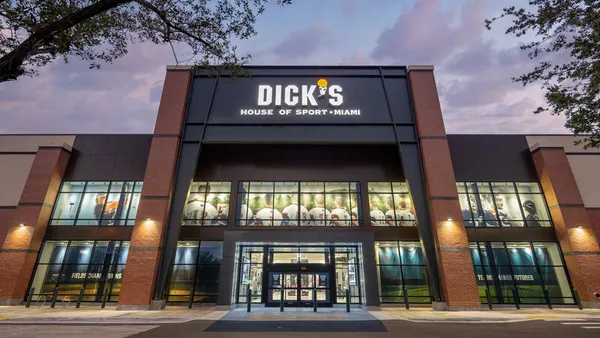Dive Brief:
-
Pure-play e-retailers are twice as likely as brick-and-mortar retailers to report that they’re unprofitable (44% versus 20%), and are nearly twice as likely to say they are struggling to make the investments necessary to improve profitability (69% versus 39%), according to a survey of global retail leaders conducted by Ipsos for Publicis Sapient and Salesforce.
-
The scramble to ramp up e-commerce during the pandemic took a toll, with a vast majority (70%) of those surveyed saying it was done in “less-than-optimal ways;” pure-play e-retailers (78%) and specialty non-apparel retailers (80%) were most likely to agree with this. Grocers, among the least likely to expect improved e-commerce profits, face unique challenges, per the report.
-
To boost profits, retailers' investment priorities include digital customer experience and omnichannel commerce in the top spots; supply chain modernization and marketing tech/data monetization in the middle; and customer service, digital store, and strategy at the bottom.
Dive Insight:
Consumers expect to be able to buy just about anything online, but retailers in general seem to be facing the reality that it’s one of the least profitable ways to conduct business.
With stores closed off early in the COVID-19 outbreak and then many people wary of in-store shopping even as they opened, retailers of all sizes pivoted quickly, sending e-commerce soaring. That has subsided to a great degree as shoppers returned to stores in recent months.
Still, 85% of the retail executives surveyed believe "that the COVID-19 pandemic has forever changed the nature of retail,” according to the report. Even more — a whopping 96% — believe that online sales will continue to grow, no matter what happens with the pandemic.
Much of online retail’s extra costs come from retailers themselves taking on tasks — grabbing items off shelves, checking out and driving home — that previously were accomplished by their customers.
“Retail's pricing and margin structure was built long ago in a purely brick-and-mortar world,” Jeffrey Sward, founding partner and CEO at Merchandising Metrics, said by email. “A world where the customer was a highly productive free employee. They showed up at the store, they shopped, they selected, they picked, they packed, they took it all to a register and then did their own delivery back to the house. Simple. Beautiful.”
Added to that is the fact that a higher level of returns is an ingrained aspect of e-commerce, Sward also said.
Almost 40% of the retail decision-makers surveyed agreed that their e-commerce operations aren’t meeting profit targets, while 27% said e-commerce is hurting overall profitability and 25% said it’s not profitable at all, according to the report. Scale doesn’t seem to help much, considering that the largest retailers (with revenue of $5 billion or more) are above-average in saying that e-commerce is less profitable than their brick-and-mortar operations.
That has led many DTC players like Warby Parker, Casper and others to turn to brick and mortar, either for their own operations or in partnership with third-party retailers. Wholesale may be one of the most lucrative routes to profits, according to research last year from BMO Capital Markets.
The study involved approximately 300 retail decision makers in the U.S., U.K., Germany, Denmark, Norway, Sweden and Australia.














